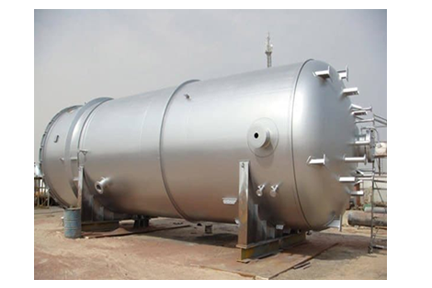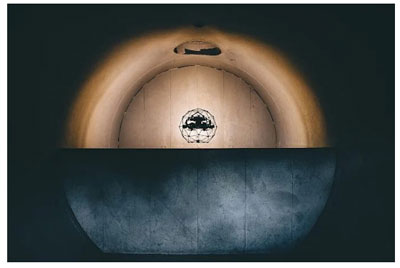Pressure vessels are industrial containers designed to hold vapors, liquids or gases.
Because pressure vessels usually hold materials at a high pressure they can be dangerous if not properly maintained. Regular inspections are a critical part of the maintenance process for pressure vessels, helping to reveal potential problems before they develop further.
Because pressure vessels usually hold materials at a high pressure they can be dangerous if not properly maintained. Regular inspections are a critical part of the maintenance process for pressure vessels, helping to reveal potential problems before they develop further.
Here is a list of the topics covered in this resource to help you find the information of most interest to you:

Although we have already provided a definition of pressure vessels in the first sentence of this article—they’re “containers designed to hold vapors, liquids, or gases at a specific pressure”—each country has strict definitions of what they are, so it’s worth spending some more time defining them.
The reason for these narrow definitions is because pressure vessels are dangerous.
To help mitigate the dangers they pose, almost every country in the world has laws regarding how pressure vessels are designed, how they’re built, and how they can be operated.
In addition to general regulatory requirements for pressure vessels, every individual pressure vessel has specific operating limitations, called its “design pressure and design temperature.”
If a pressure vessel is operated beyond the pressure or temperature it was designed to handle, the result could be the catastrophic failure of the unit. In the worst case scenario, operating outside of a vessel’s design could lead to fires, poisonous gas leaks, or even explosions, all of which could pose an extreme danger to anyone working in the surrounding area.
Common Characteristics of Pressure Vessels
Note: Psig is a measure of pressure that stands for Pounds Per Square Inch Gauge. Learn more about psig on the Energy Education website.
Types of Pressure VesselIt’s important to note that the term “pressure vessel” can refer to a variety of
storage containers used in industrial settings.
Here are some of the most common types of pressure vessels.

Inspections are a crucial part of the maintenance process for pressure vessels.
This section covers information on the frequency with which inspections should
happen, what is done during inspections, the types of testing that can be used in
inspections, and ends with a checklist of what is generally covered during a
pressure vessel inspection.
Most pressure vessel regulations provide specific requirements for the frequency of inspections. As a general rule of thumb, pressure vessels should be inspected at least once every five years. An inspection should also be conducted once the vessel is installed, prior to it being put into service.
What is done during and Inspection
Pressure vessel inspections can refer to an inspection of the vessel’s condition
externally, internally, or both.
In these inspections, inspectors may :
Types of Pressure Vessel Testing
There are five common types of tests inspectors perform during pressure vessel
inspections :
1. VISUAL TESTING
Visual testing is the most common type of non-destructive testing (NDT) an
inspector might perform. The goal of a visual inspection is to visually review both
the interior and exterior of the vessel to look for any cracks or flaws (see the
checklist just below for more details). Learn more about visual inspections.
2. ULTRASONIC TESTING
Ultrasonic testing uses sound waves to measure the thickness of a material’s
surface in order to detect any defects that may have arisen. This kind of testing is
volumetric, meaning it can detect flaws inside the vessel as well as on its
surface. Learn more about ultrasonic testing.
3. RADIOGRAPHIC TESTING
Radiographic testing uses radiography to detect defects near the surface or on the
surface of a vessel. This testing method is also volumetric. Learn more about
radiographic testing.
4. MAGNETIC PARTICLE TESTING
Magnetic particle testing uses magnetic current run through the pressure vessel to
identify deformations or defects on the surface of the vessel, which will interrupt
the flow of the magnetic current and appear as a “flux leakage field.” Learn more
about magnetic particle testing.
5. DYE PENETRANT TESTING
Dye or liquid penetrant testing uses liquid (i.e., the penetrant) sprayed onto the
vessel to identify defects or flaws on its surface. A fluorescent chemical can be
added to the penetrant to make flaws visible under U.V. light. Learn more about
dye penetrant testing.

Pressure Vessel Inspection Checklist
Here is a checklist of the things inspectors usually look for during a pressure vessel
inspection.
EXTERNAL INSPECTIONS — WHAT TO INSPECT
Here's what inspectors look for when inspecting the exterior of a pressure vessel:
INTERNAL INSPECTIONS — WHAT TO INSPECT
Here's what inspectors look for when inspecting the interior of a pressure vessel





